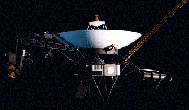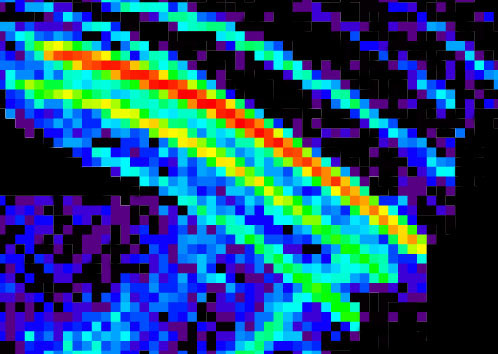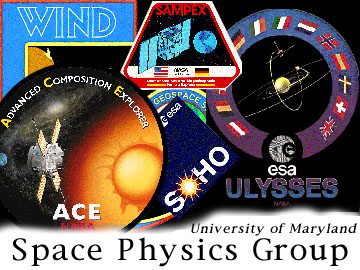

Trajectories
Mission
Instruments
LECP Data
Flux
Spectrograms
LECP Researchers
Prof. Douglas C. Hamilton
Prof. George Gloeckler
Mr. Matthew E. Hill
1. 151-Day ACR Periodicity
2. Large ACR Oxygen Increase
Related Sites
Voyager Project Home Page
JHU/APL Voyager LECP Site
U. of Kansas LECP Site
Return to the UMD LECP Page
 University of Maryland
University of Maryland
Voyager LECP Home Page
Instrumental Page
(6/10/98) Matt Hill's MS Thesis details some information about various problems
that have been identified with the CR5a telemetry, as well as details
concerning the U. of Maryland analysis software. Below an on-line and a PDF
version of this document are available:
M.E. Hill MS-Thesis (PDF Version)
M.E.
Hill MS-Thesis (On Line Version)
(3/13/98) Excessive counts, and an unusual count distribution have been identified in sector 4. This is consistent with the observations by our colleagues at JHU/APL of instrumental noise in sector 4.
(6/19/98) The following document identifies a typo in the
description of the PHA priority scheme:
Priority Scheme(On-Line Version)
(6/23/98) It is now clear that The V1 stepper-motor has in the past become stuck in sector 8.
This has been observed to have taken place during the CR5a, CR5 and
Far Encounter modes, during the late 1980's and early 1990's. The stuck sector
can be unambiguously identified in the PHA data. The clear sector 8 signature caused by
the on-board alpha particle source indicates that LECP is stil physicically in sector 8 while
the sector is telemetered as sector 7, for example. The document below
gives early examples of the PHA data used to identify the sticking sector.
Stuck Sector(PDF Version)
(2/9/99)CH17 PHA mis-identification has been observed. Some of these He events
are mis-identified as CH16 events. The figure below, using count-distribution-analysis (CDA) as
dscribed in M.E. Hill's MS-Thesis (above), illustrates the PHA mis-ID for V1:
V1 CH16 CDA (PDF Version)
(3/3/99) The Quality of Frame (QFRM) word (MRT word #21) may be used to indicate whether a given record contains usable (and complete) data. The data have been found to be complete and usable when the QFRM=32 condition is met. When this condition is not met, (i.e., QFRM NOT= 32), the data are unreliable and/or incomplete. For V1 1997 MRT data, rate errors were reduced by 79% when the QFRM=32 condition was added as a requirement.
(3/12/99) It appears that the V1 CH19 rate-scaler has stopped functioning. The letter
below indicates the nature of the problem:
CH19 problem(On Line Version)
(9/14/00) The following note was distributed to the LECP team:
Re: No heavy ion rate summaries in Far Enc MPTs
Dear LECP Team:
It appears that the Voyager 1 and 2 LECP MPT records are missing the heavy ion
rate summaries during the Far Encounter telemetry mode. We have found that V1
and V2 MPTs around 1987-1990 only have rate summaries for H and He. We still
have PHA data for all species, however. Also, we do get rate-spikes in the
heavy ion rates, as the count-rates are not zero when we disable our rate-
spike filter, but are zero when the normal spike limits are set.
There is enough CR5 coverage during these years as to not make this problem a
show-stopper, but we thought you should be aware of the issue. Also, I assume
that the problem is only in the MPTs...can anyone directly confirm that there
isn't a problem with the Far Enc rates in the interplanetary MRT data?
Best regards,
Matt

